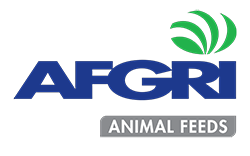PRODUCTION CHALLENGES WITH KIKUYU PASTURES
SP Els, AFGRI Animal Feeds
When the grazing platform changes from ryegrass to kikuyu and/or the neutral detergent fibre (NDF) increases and the protein content decreases – historically the first nutrient nutritionist would increase is the crude protein (CP) concentration in the dairy meal. Making decisions based on CP concentrations as well as energy expressed as mega joules metabolizable energy per kg feed (MJME/kg) are based on old ideologies.
Formulating rations on CP, soluble protein (SP), rumen degraded protein (RDP), rumen undegraded protein (RUP) and non-protein nitrogen (NPN) which is the amount of nitrogen (N) analysed times 6.25 to give the CP value. This calculation assumes that all proteins in animals and plants have a 16% N content, which is not accurate. Furthermore, the CP value of a feed does not give any indication what the nutritional value of a protein source is, making it invaluable to use as a nutrient. Instead the profile of the amino acids (A/A) of the specific protein source and digestibility will determine the nutritional value. What is further important is that the total NPN and total or individual A/A available in the rumen and lower intestine are met for specific production targets. Frequently advise is given to increase the concentrations of CP in the diet before the profile of the A/A or limiting A/As has been looked at or are known. The profile of the A/A or limiting A/As cannot be overlooked or brushed aside when given advise to increase the concentrations of CP in the diet.
Lowering the CP of the cow’s diet offers an opportunity to improve the profitability as well as nitrogen utilization. Some dairy nutrition software has a dynamic rumen model wherein the passage rate of feeds determines the outflow of nutrients from the rumen. This passage rate of feeds is largely determined by feed intake but also adjusted by ration forage content and particle size. Nutrients that are not constant will vary according to feed consumption and ration ingredient such nutrients are metabolizable protein (MP), metabolizable energy (ME), amino acid content of MP, and rumen available protein (peptides and ammonia). Thus, linear programming can no longer be used and dynamic digestion models – nonlinear programming is required.
While the ryegrass pasture quality deteriorate and/or kikuyu comes in play consultants will more likely increase the CP content of the dairy meal, without considering that although CP of the pasture decreased, the higher lignin and NDF content and consequently lower NDF digestibility negatively impact dry matter intake (DMI). Generally, cows grazing on 24-hour rye or kikuyu pasture RDP is oversupplied in contrast with the energy especially fermentable carbohydrates which are deficient. On pasture farms energy is still the first limiting nutrient whereas rumen ammonia exceeds 200% of requirements and even on low quality pastures the rumen ammonia requirements are still above 150% – feeding a 10% CP meal. It is important to feed the correct energy and protein “package” instead of CP and ME content.
Non-protein nitrogen (NPN) consumed or ammonia derived from the degradation of true protein in the rumen is either used by rumen microbes – the amount used will be determined by the number of and how rapidly they are growing, in other words it will depend on the amount of energy available to the microbes. The rest of the ammonia is either recycled to the rumen via saliva or will be excreted in the urine or as milk urea nitrogen (MUN). The ammonia derived from NPN and from degraded true protein and not used by the microbes will not be of any value. The amount of A/A that is not supplied by the microbes needs to be supplied from bypass feed sources that is digestible in the lower intestine. Research showed from Figure 1 that diets with different CP percentage in lactating cows had no effect on milk nitrogen output – which is milk protein and should not be confused with MUN. Furthermore, as the CP percentage increased in the diets the oversupply of N was excreted as manure (faecal & urine).
Urea is then produced in the liver from the excess ammonia and this process uses energy, energy which could instead be used for other requirements. Dairy cows are particularly efficient in recycling urea when fed low-protein diets. It has been proven by some feed systems in the UK that the efficiency of using protein for milk protein synthesis is better for diets which are deficient or marginal in protein than those which are adequate.
When looking from a nutritional point of view, the standpoint would be not to apply CP any longer, but still CP are being used by nutritionist and/or consultants probably due to fear of the unknown. Ipharraguerre and Clark, 2005 found a significant curvilinear relationship between milk yield and the concentration of CP of the diet on 112 research trials. As indicated in figure 2 diets on the same CP concentration varied in 20kg milk yield per day. Which means that if there is a decline in milk production it’s less expected to be from a CP concentration and more probably a decrease in DMI and/or diet digestibility.


.png)

